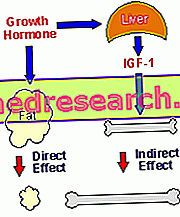Definition
The earwax cap is an obstruction of the ear due to the accumulation of ceruminous secretion in the external auditory canal. The so-called "plug" is formed when, due to hygienic or pathological reasons, the earwax is not able to flow towards the outside of the auricle.

The earwax stopper is formed when the quantity of cerumose secretion produced is excessively abundant, or when its normal outward sliding motion is altered.
Step back to understand ...
Ear wax is a waxy substance normally produced by the sebaceous and cerumen glands of the external auditory canal. The right amount of ear wax is essential to maintain a certain amount of moisture in the ear (thus reducing the risk of drying) and to hinder the entry of harmful particles (pathogens, dust, water, etc.).
Causes
The cerumen plug can be formed according to two mechanisms, each of which depends on different causes:
- The quantity of cerumen produced is excessively abundant (HYPERSECREECTION GANDANDULAR). In such circumstances, the earwax cap may be due to several factors:
- Seborrheic dermatitis
- Infantile / neonatal age: the ceruminous glands of small children tend to be hyperactive, therefore the earwax cap tends to form more easily
- Psoriasis
- Senescence: the ceruminous glands of the elderly are less trophic, therefore they produce dry earwax which tends to slide with greater difficulty towards the outside, favoring the formation of the earwax cap
- The normal SCROLLING OF THE CERUME (from the inside of the ear towards the external auricle) is altered or hindered by:
- Excessive amount of water inside the ear: earwax is a hygroscopic substance (water adsorbs), therefore in contact with water it tends to swell. By increasing in volume, earwax can obstruct the ear canal.
- Ear disorders (eg otitis, inflammatory stenosis of the external auditory canal)
- Hearing aids: hearing aids prevent the physiological leakage of the earwax, therefore favoring the formation of the cerum-like cork.
- Poor / incorrect ear hygiene: mechanical cleaning of the ears, performed with cotton buds, can paradoxically create a wax plug. The "cleaning" with cotton-coated sticks, in fact, tends to compact the wax, pushing it towards the inside of the ear canal. In severe cases, such behavior can even cause the eardrum to pierce.
- Tumors (eg osteoma: benign bone cancer that occurs mainly in the bones of the skull)
Symptoms
Earwax cap is one of the factors responsible for progressive hearing loss. In most cases, the earwax cap can cause the following symptoms:
- Tinnitus (ringing in the ears)
- Autophony (rumble of one's voice)
- Hearing loss (hearing loss)
- Bad ears
- Full ear perception
- Sensation of loss of balance / vertigo
Removal of the cerumen plug
Various and specific methods are available for removing the wax plug.
DROPS (water softeners)

Another remedy to remove the cerumen plug is to instill drops formulated with:
- hydrogen peroxide (hydrogen peroxide)
- hydrogen peroxide + urea + glycerin
- carbamibe peroxide
- carbamibe peroxide + glycerin
- peanut oil, turpentine and dichlorobenzene (aryl halide derived from benzene)
- docusato (emollient substance also used for laxative purposes)
How to use the drops to remove the wax plug
- Tilt the head sideways, with the ear occluded by the wax plug upwards
- Instill the drops into the ear
- Stay in the same position for a couple of minutes
- Remove the loose earwax from the ear canal
- Rinse gently with warm water to remove wax residue. Do not direct jets of water directly into the ear canal.
IRRIGATION OR WASHING
It essentially consists of introducing a jet of water directly into the ear canal. Before the maneuver, it is advisable to instill in the ear a few drops of oil (also cooking oil), a useful precaution to soften the earwax: by doing so, the removal of the cap is facilitated.
During washing, the water is sprayed into the ear with the aid of a filled syringe. To facilitate the removal of the earwax cap, it is advisable to pull the ear slightly upwards, as far back as possible (towards the scalp); then, direct the syringe nozzle (full of water) slightly upwards towards the ear canal, to facilitate the exit of the ear wax.
After the procedure, tilt the head to facilitate the release of wax from the ear canal.
It may be necessary to repeat irrigation several times.
To replace water, you can use:
- saline solution
- water + vinegar solution
- water solution + sodium bicarbonate
Note:
- Although washing the earwax cap is a fairly simple maneuver, care must be taken during execution, given the risks of breaking the tympanic membrane or tearing the skin of the ear canal.
- Use lukewarm water to wash the wax plug: using too cold or too hot water compared to body temperature can cause dizziness.
- Do not wash the earwax cap in case of otitis or perforation of the eardrum: a similar attitude can create severe pain and dizziness.
- The water jet used to remove the wax plug should be sprayed more gently in children.
- Immediately stop the procedure if the patient complains of severe dizziness, nausea or intense pain during irrigation.
CURETTA (or curettage)
The curette is a special curved instrument used by the doctor to remove the ear plug accumulated in the ear. The curette has a particular end, very useful to prevent the doctor from entering too deeply into the ear canal.
The "curettage" method is used to remove earwax caps responsible for alterations in hearing ability or partial occlusion of the duct.
This practice for removing the earwax cap is particularly widespread among Asian peoples: we recall, in fact, that Asians tend to have a drier, easily removable earwax with this method.
SUCTION OF CERUME
The earwax cap can also be removed by aspiration: the method, which must be performed exclusively by professionals, consists of the literal removal of the earwax using a special cannula connected to a suction device. The aspiration of the cerumen stopper is a second choice practice, generally used in case of contraindications to ear irrigation.
Prevent the wax plug
Prevention is essential to minimize the risk of formation / re-presentation of the earwax cap. The correct cleaning of the ear canal, the weekly washing of the ears (if necessary) and, possibly, the instillation of some specific drops in the ear prevent the formation of earwax caps.



